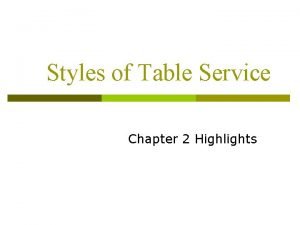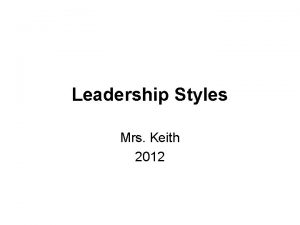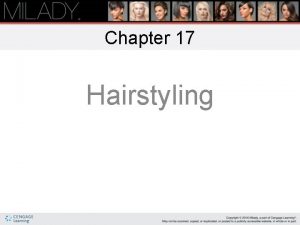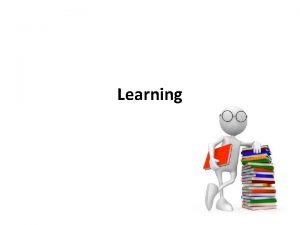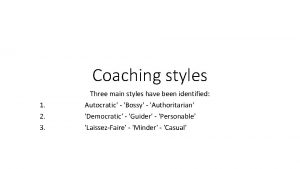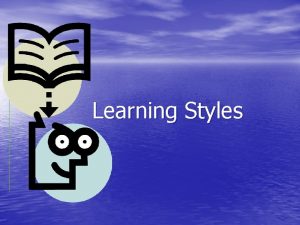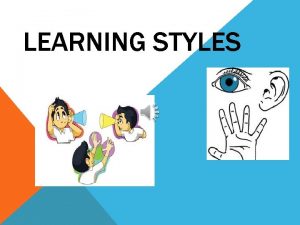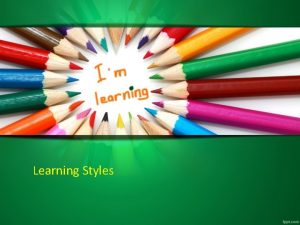Learning Styles The Three Main Learning Styles Visual








- Slides: 8

Learning Styles

The Three Main Learning Styles Visual learners Auditory Learners Kinesthetic, Body, or Tactile Learners

Common Characteristics of Visual Learners See details Pay close attention to body language Can make Prefer face-tomovies in their face meetings minds of information they are reading Have a Can easily keen recall printed awareness information of aesthetics Are distracted by untidiness or movement Easily understand information presented in charts, pictures, or diagrams Good with visual May forget symbols names but remember Comfortable with faces books and graphics

Auditory Learners tend to: • • • Learn best by hearing Have strong oral communication skills Be talkers Accurately remember details from lectures and conversations Hear tones, rhythms, and notes of music Forget faces but remember names and what was talked about Sound out words Memorize easily Prefer verbal directions Prefer the telephone Become distracted by sounds or noises

Kinesthetic or Tactile learners often: Learn best by using their hands Are well coordinated Learn best by doing Are able to disassemble and reassemble things Were labeled as hyperactive Ignore directions and figure it out as they go along Jump right in and try activities Prefer action stories and may not be keen readers Write words down to see if they feel right Gesture and use expressive movements

Suggestions for Visual Learners • Keep the study environment clutter free • Highlight and write as you study Use different colors to select and organize • Always write down what you need to remember • Make recall cues as visual as possible with capital letters, colors, and illustrations • Make class notes visual with drawings, spacing, symbols, and so forth • Use charts and pictures to study • Recall information by visualizing text pages, notes, or study cards • When solving problems, draw or illustrate the problem and solution

Suggestions for Auditory Learners • • Have a quiet place to study • • Recite aloud as you study Attend all class lectures Tape record lectures in addition to taking notes, and • play them in your car • Talk yourself through the steps • of a problem Study in groups or with friends Talk to yourself; describe diagrams or practice answering test questions out loud Recite study cards into a tape recorder, and play it back Recall information during exams by hearing yourself recite in your head

Suggestions for Kinesthetic Learners • Use as many of your senses as possible when you study • Move around when you study; put study cards on the floor, and recite them as you move around the room • Study small frequent chunks • Use a timer to set study periods; Start with short times and work up; Take a break when the timer sounds • Study with another kinesthetic person • When solving problems, move around and manipulate items to represent parts of the problem • When taking tests, try to feel how you stored information by remembering what you physically did as you studied
